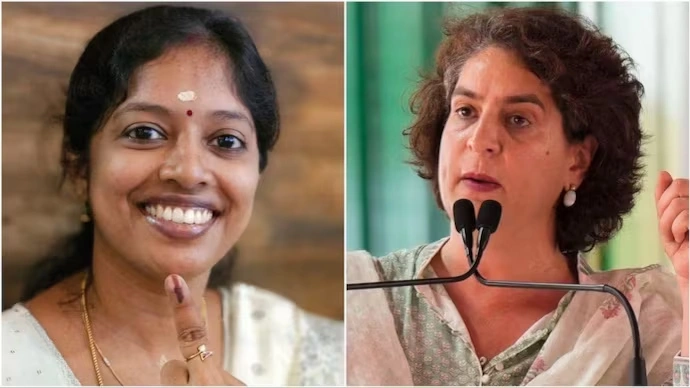The exit polls for the Haryana and Jammu & Kashmir assembly elections will be released later today, following the conclusion of polling in Haryana. These predictions, offered by agencies such as Today Chanakya, Axis My India, CSDS, C Voter, Times Now, and Poll of Polls, will provide insight into the likely outcomes of both states’ elections ahead of the official result announcements on October 8.
In Haryana, where the election is taking place in a single phase, a total of 1,031 candidates are competing for seats across all 90 assembly constituencies. Voters are casting their ballots at 20,632 polling stations set up across the state.
Meanwhile, Jammu & Kashmir has just concluded its first assembly election in a decade, held over three phases. Approximately 3.9 million people voted across 5,060 polling stations, making this election a significant event in the Union Territory’s political history. The exit polls for Jammu & Kashmir will be closely watched to gauge the changing voter dynamics in the region.
The Significance of Exit Polls
Exit polls are conducted immediately after voters have cast their ballots to provide early indications of which candidates or parties are favored. While these polls are not always accurate, they serve as a useful tool to anticipate possible outcomes and understand voting trends.
The results from today’s exit polls will offer insight into voter preferences and whether the political landscape in both Haryana and Jammu & Kashmir is shifting. In Haryana, voters are deciding whether to extend the BJP’s rule for a third term or choose an alternative in the Congress, AAP, or regional parties. In Jammu & Kashmir, this marks the first assembly election since the abrogation of Article 370, making the polls even more significant.
What Are Exit Polls?
Exit polls are surveys conducted immediately after voters leave polling stations. They aim to capture voter preferences by asking participants who they voted for and gathering demographic information such as age, gender, religion, and regional background. The goal is to get a representative snapshot of voter behavior on election day.
While exit polls are not always completely accurate, they offer a glimpse into likely election outcomes by identifying trends, such as which demographic groups favor certain candidates or political parties. Unlike opinion polls, which are conducted before voting begins, exit polls are more reflective of the actual mood of the electorate as they capture data on the day of voting.
However, it’s important to approach exit polls with caution, as they can sometimes be misleading. As a common saying in political circles goes, “Exit polls often get it wrong.”
How Exit Polls Are Conducted
Exit polls are carried out at selected polling stations after voters have cast their ballots. Researchers create questionnaires that ask voters about their choices, and they also collect demographic details to understand how different groups may have voted. The questionnaires are typically close-ended, offering predefined answers to ensure the data can be easily analyzed.
Polling agencies select a representative sample of voters from various regions to get an accurate picture of voting patterns across the entire state or territory. Different organizations may use different methods, such as random or strategic sampling, to get the most reliable results. The data collected is then analyzed to identify voting trends and patterns that could predict the final election outcomes.
Despite their predictive value, exit polls are regulated by the Election Commission of India (ECI) to prevent influencing voters. The ECI mandates that exit polls can only be released after the final phase of voting is complete. This rule ensures that voters are not swayed by early predictions and that the electoral process remains fair.
Any violation of these regulations is taken seriously, with penalties including imprisonment for up to two years and fines for those found guilty of prematurely publishing exit poll results.
What to Expect from Today’s Exit Polls
As voting wraps up in Haryana today, exit poll results will begin to surface, providing early predictions for the state’s assembly elections. Similarly, the three-phase voting process in Jammu & Kashmir has concluded, and exit polls will offer a first look at how voters in the Union Territory are responding to their first assembly election in a decade.
In Haryana, the main contenders—the BJP, Congress, AAP, and regional parties like the Jannayak Janata Party (JJP)—are all keenly awaiting the exit poll results to get an early sense of voter behavior. Meanwhile, in Jammu & Kashmir, where the elections have drawn considerable attention due to the region’s political history, the exit polls will be closely watched for any signs of change in voter sentiment.
While exit polls should always be taken with a grain of caution, today’s results will provide valuable insights ahead of the official vote counts on October 8. As always, the final say rests with the official tally, but exit polls help paint an initial picture of what voters might be thinking.

















